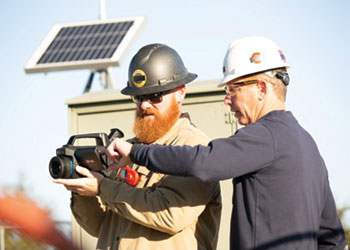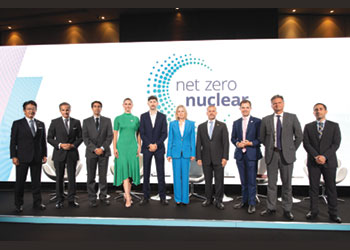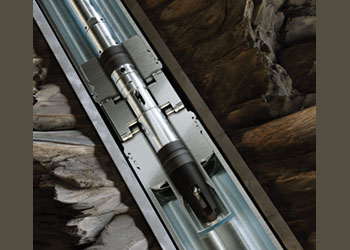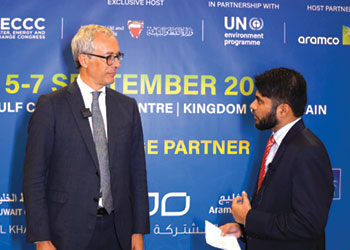
 Cerasoli ... calling for investment in energy infrastructure
Cerasoli ... calling for investment in energy infrastructure
While the US government incentivises trillions of dollars of investment in renewable energy over the next several decades, it would be a shame to miss our energy transition goals due to a lack of investment in energy infrastructure, Mike Cerasoli tells OGN
US President Eisenhower signed the Federal-Aid Highway Act in 1956, which led to the investment and construction of 41,000 miles (22,530 km) of highways over a 10-year period.
More recently there has been a flurry of legislation passed targeting various industries, such as the Inflation Reduction Act for renewable energy, and the CHIPS Act for semiconductors.
While Congress is in the mood, we think it should let energy infrastructure get some too. At the top of the energy infrastructure wish list is a bigger and better electric grid, as we believe its current limitations will inevitably make it the biggest barrier to energy transition.
Without upgrades and expansions to the grid, we will end up with less renewable energy, more emissions, and a higher probability for human-made and natural catastrophes.
The reason why there is a car in every driveway and a chicken in every pot is because of scale.
Scale is the great provider of things, allowing a developer to incorporate the best technology and, most important, drives unit costs lower. Scale is the major reason why the cost of renewable energy is now below fossil fuels.
However, there is a limit to how much you can achieve without running into new bottlenecks.
 |
Entire US installed capacity vs active queues |
Scale requires space, preferably inexpensive. This tends to be in rural areas where space is at a discount. Therefore, the problem we need to solve today is the delivery of cheap electricity to market.
Think about it, where would Amazon be if it couldn’t efficiently deliver products to market?
If we expect to achieve our energy transition goals the renewable energy sector must dedicate the same amount of attention to delivery as Amazon does.
The current wait time in the interconnection queue for new power generation or storage is over five years, up from less than two years in 2008.
In fact, at the end of 2022, there were more than 2,000 gigawatts (GW) waiting to be connected across the US, an amount that if built would double the nation’s current generation capacity.
Therefore, it was likely with great relief to both electric generation developers and grid operators that the US Federal Energy Regulatory Commission (FERC) unanimously approved a final rule in July reforming interconnection procedures and agreements.
This reform is a great victory for renewable energy since the vast majority (over 90 per cent) of the queue is zero carbon-focused infrastructure.
Even so, more needs to be done. The grid is inadequate and outdated. More than 70 per cent of the US electricity grid is more than 25 years old, with most infrastructure having been built in the 1950s and 1960s.
This all matters because an upgraded and larger grid is necessary to provide three critical ingredients of energy transition: Reliability, affordability, and sustainability.
 |
US September 2018 solar GHI average |
• Reliability: While renewable energy costs on a per MWh basis have declined below fossil fuels, that’s only when renewable energy is generating electricity.
Generally speaking, windmills are spinning roughly 40 per cent of the time and solar fields are delivering electricity roughly 25 per cent of the time.
This mismatch can be partially dealt with a more integrated and expansive grid and the incorporation of energy storage (such as batteries).
Power load management is only possible if load managers can build systems that are capable of delivering electricity from areas with surplus generation to areas with excess demand.
Reliability is critical to delivering a seamless customer experience, which will make for a smoother and quicker energy transition.
• Affordability: Economies of scale on renewable energy generation will only go as far as the next bottleneck. The FERC action detailed above helps shorten the line for generation projects, but it won’t do much to increase or enhance transmission capacity.
The National Renewable Energy Laboratory (NREL) suggests that a doubling or tripling of transmission capacity is needed to achieve 100 per cent clean energy, a need that currently lacks plans or incentives to accelerate.
 |
US wind speed at 120m above surface Level |
Without adequate transportation to market, economies of scale won’t be fully realised, and some renewable energy generation will not be built.
• Sustainability: Reliability and Affordability are the two major foundations of consumer buy-in. Buy-in is basically the idea that consumers will not support energy transition if their lives are degraded by a lack of energy.
Delivering reliable and affordable renewable energy will secure this buy-in, which allows developers and regulators to approve more renewable energy projects.
In summary, the government is incentivising trillions of dollars of investment in renewable energy over the next several decades.
It would be a shame to miss our energy transition goals due to a lack of investment in energy infrastructure.
Better yet is the ample room for compromise, since the vast middle agrees that all forms of energy and innovation are needed to solve our climate challenges. It’s high time for energy infrastructure to get some.
* Mike Cerasoli is the Co-Head of Eagle Global’s Energy Infrastructure team, which focuses on and develops active and passive asset management strategies in traditional and renewable energy infrastructure. Eagle Global Advisors is an independent investment advisor, managing individual investment portfolios containing domestic equity, international equity, energy infrastructure and master limited partnerships, and domestic fixed income securities.
By Abdulaziz Khattak














































































































